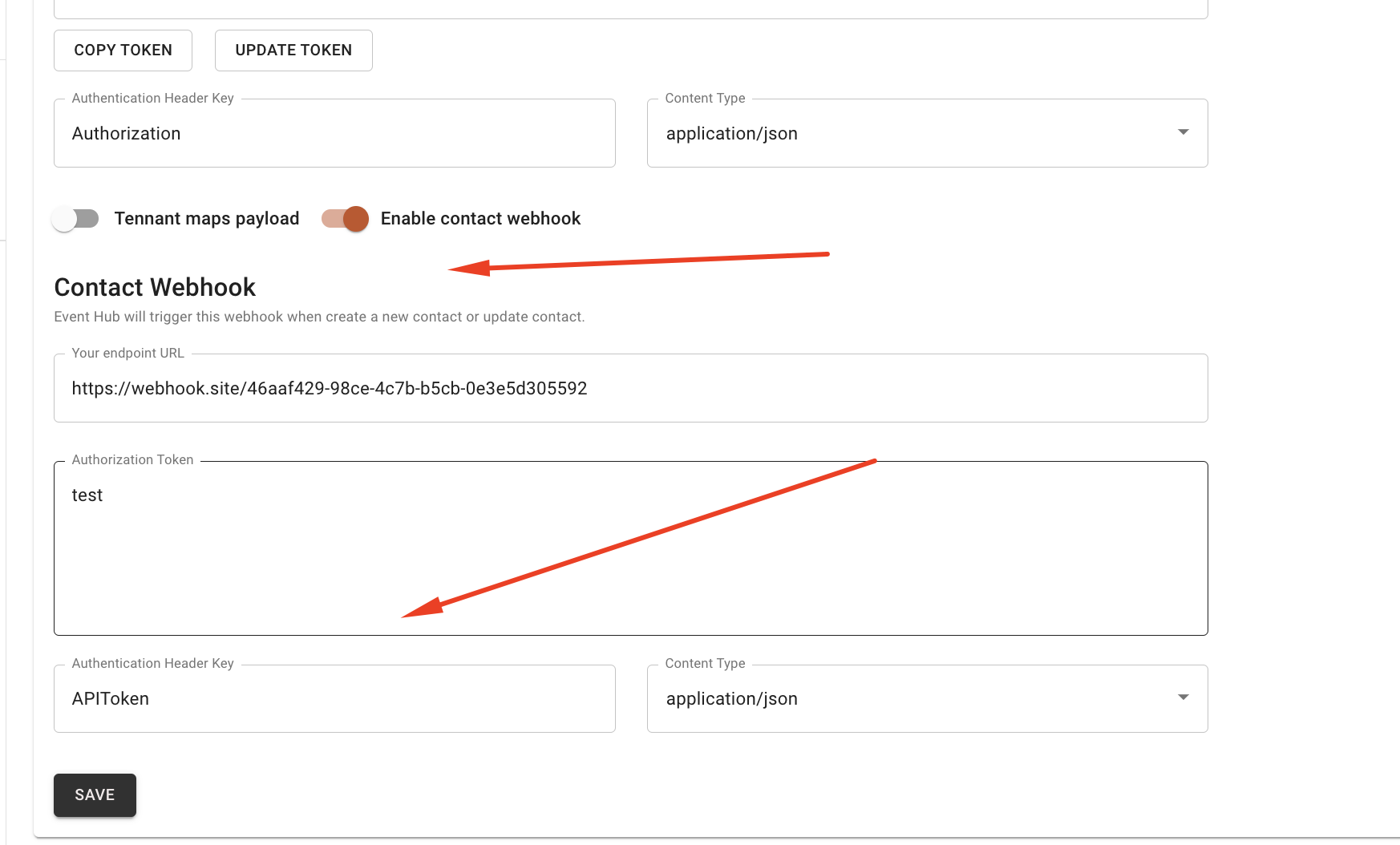If you're using another third-party contact system it's easy to set up two-way synchronization with Event Hub Contacts. This article explains how.
API mapping is found in the app on the page;
https:/client.eventhub.com.au/menu/contacts/my_api_mapping
This is a tab of the contacts Menu.
You can use these Event Hub API endpoints to create, delete and update contacts.
api.eventhub.com.au/create-contact
api.eventhub.com.au/update-contact
api.eventhub.com.au/delete-contactAlso, all actions can also be performed at the endpoint;
api.eventhub.com.au/contactHere the post-type action is defined in the payload body. These "trigger" type values are also configurable in the app.

The following fields are mandatory when adding a contact;
FirstName
LastName
email.
external_foreigh_key
The first three fields, as concatenated, define the Event Hub human-readable Key. An example might be;
scott_hyde_scott_eventhub.com.au_1. * '@ 'is removed
On creation of any contact, we also create a unique pure contact ID (UUID) and return this on successful creation.
Mandatory for future contact updates
We have also made the external_foreigh_key mandatory. This is your systems key field and allows you to manage your contact using your KEY. Hence, you will be able to use that on future updates rather than store the Event Hub UUID.
Event Hub also expects one other field as mandatory.
"Opt-in" status.
This field is managed by the un-subscribe process and is mandatory to conform to privacy laws.
Event Hub will only send communications where this is True.
EH can accept "True" or "Y" (False, N) to update this field. If it is not included in your payload the value will remain as Null (unknown).
So that your users can create or update contacts in Event Hub and you maintain synchronized data. Event Hub will fire a webhook on "create" or "update" of any contact to your webhook URL endpoint.
We recommend "delete" is performed in your own system where requried and the subsequent update to Event Hub is made.
.
The Webhook Endpoints and Key (if needed) can also be added in the webhook section.

So that Event Hub does not need to create and maintain many integration we have taken a no-code approach. This is turned on by the Toggle "Tennant Maps payload".
If this is not set we assume the same field names are used (as found in our Postman docs).
You can set your own mapping fields for both API and webhooks.
Our Code will convert the field names you use to our own when this is set. This means there is no code "lock-in" and you can easily add more fields as needed
You will be required to use an Auth Key in your payload.
This is generated in the app and also available on the API page.
This should be contained in the header as:
Header Value;
Authorization. : Token
The payload sent is expected to be formatted as;
application/JSON
At the top right of the page, you will see logs of both API calls and webhooks sent.
This should help with any debugging issues.
Our Technical docs are available here.
Thanks!